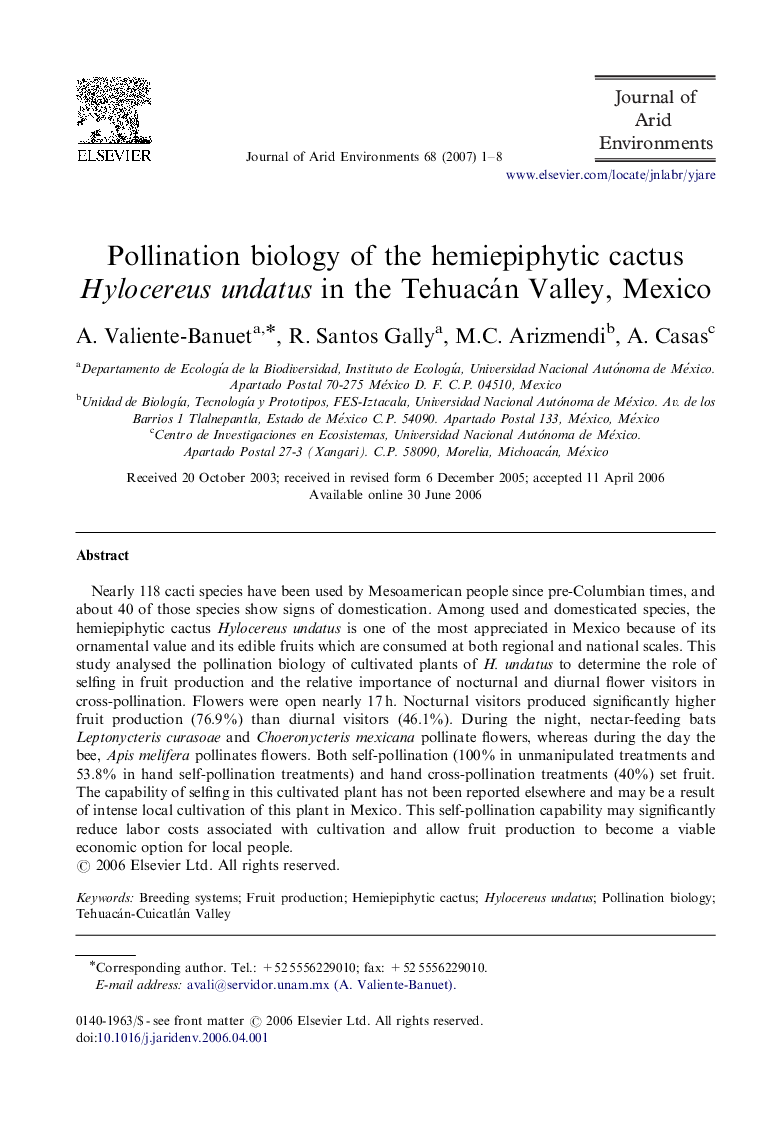| Article ID | Journal | Published Year | Pages | File Type |
|---|---|---|---|---|
| 4394730 | Journal of Arid Environments | 2007 | 8 Pages |
Abstract
Nearly 118 cacti species have been used by Mesoamerican people since pre-Columbian times, and about 40 of those species show signs of domestication. Among used and domesticated species, the hemiepiphytic cactus Hylocereus undatus is one of the most appreciated in Mexico because of its ornamental value and its edible fruits which are consumed at both regional and national scales. This study analysed the pollination biology of cultivated plants of H. undatus to determine the role of selfing in fruit production and the relative importance of nocturnal and diurnal flower visitors in cross-pollination. Flowers were open nearly 17Â h. Nocturnal visitors produced significantly higher fruit production (76.9%) than diurnal visitors (46.1%). During the night, nectar-feeding bats Leptonycteris curasoae and Choeronycteris mexicana pollinate flowers, whereas during the day the bee, Apis melifera pollinates flowers. Both self-pollination (100% in unmanipulated treatments and 53.8% in hand self-pollination treatments) and hand cross-pollination treatments (40%) set fruit. The capability of selfing in this cultivated plant has not been reported elsewhere and may be a result of intense local cultivation of this plant in Mexico. This self-pollination capability may significantly reduce labor costs associated with cultivation and allow fruit production to become a viable economic option for local people.
Related Topics
Physical Sciences and Engineering
Earth and Planetary Sciences
Earth-Surface Processes
Authors
A. Valiente-Banuet, R. Santos Gally, M.C. Arizmendi, A. Casas,
